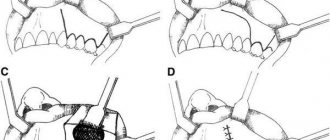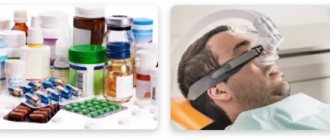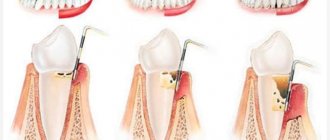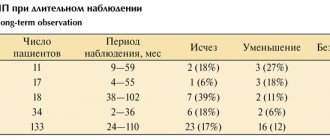September 9, 2022 Treatment of throat diseases in children is a rather difficult task. This is due to the fact that, for natural reasons, some treatment methods are not yet available to the child. One of them includes rinsing the mouth and throat: not being able to hold your breath, the baby can harm himself during such a procedure.
Does this mean that local treatment, which helps to provide a disinfecting and analgesic effect, is impossible? Fortunately, there are children's throat sprays that can be used in this situation by both adults and children.
When to use children's throat spray
Like any other medicine, a spray for sore throat in children can only be used for certain indications:
- Inflammatory diseases of the ENT organs
- Inflammatory diseases of the oral cavity
- Surgical interventions and injuries
- Dental procedures.
Inflammatory diseases of the ENT organs
This is a large group of diseases that develop under the influence of pathogens and cause unpleasant symptoms.
The most common diagnoses in childhood are:
- pharyngitis - inflammation of the mucous membrane of the pharynx;
- laryngitis – inflammation of the mucous membrane of the larynx;
- Tonsillitis (tonsillitis) – inflammation of the tonsils.
Inflammatory diseases of the oral cavity
These are one of the most insidious diseases.
A child’s tendency to frequent ARVI may be associated with chronic inflammatory and infectious processes in the oral cavity, because the oral cavity is anatomically and functionally connected to the upper respiratory tract, paranasal sinuses and even the middle ear, which makes the treatment of diseases in this area very important. The most common diseases in children are:
- gingivitis – inflammation of the mucous membrane of the gums;
- glossitis - inflammation of the tissues of the tongue;
- stomatitis – inflammation of the oral mucosa;
- candidiasis – fungal infection of the oral mucosa;
- periodontal disease is a large group of gum diseases in which there is severe damage to the tissues of the supporting apparatus of the teeth;
- calculous sialadenitis - inflammation of the salivary glands with the formation of stones in them.
Surgical interventions and injuries
Violation of the integrity of the tissues of the mucous membrane, regardless of whether it occurred during surgery or during injury, is always a high risk of infection and a set of unpleasant symptoms. Pain, burning, itching and other manifestations immediately after an injury or at the stage of wound healing cause severe discomfort to the child, and if an infection occurs, severe complications can develop.
Dental procedures
Removal of soft or hard plaque on teeth, tooth extraction, period of adaptation to braces and other dental procedures may require antiseptic treatment of the oral cavity to prevent (or treat) possible infectious processes, as well as pain relief.
Children's spray for the throat and mouth is the best option for symptomatic and antimicrobial treatment in the above cases. This is due to the fact that when spraying the product, there is no direct contact of the inflamed tissue with cotton swabs, tampons and other auxiliary means, which relieves the child of unpleasant sensations and at the same time ensures uniform coverage of the mucous membrane with the drug.
Local anti-inflammatory therapy for acute pharyngitis
According to the etiological factor, OF is usually divided into viral, bacterial, fungal, allergic, traumatic (due to foreign body entry or surgical intervention) and caused by exposure to irritating factors (hot liquid or steam, acids, alkalis, radiation, etc.) [10, 12] . The causative agents of OF are presented in Table 1. It is known that approximately 70% of pharyngitis is caused by viruses, among which are rhino-, coronaviruses, respiratory syncytial virus, adenovirus, influenza and parainfluenza viruses. It is believed that among the bacterial pathogens of OF, the leading role belongs to β-hemolytic streptococcus of group A - it causes 15-30% of cases of the disease in children and 5-17% in adults. Relatively rarely (<6%, Fig. 1), tonsillopharyngitis can be caused by streptococci of groups C and G [17, 20]. In 90% of cases, the bacterial flora of the posterior pharyngeal wall is represented by associations of 2–3 types of microbes [11]. Medicines used for local treatment of pharyngitis can be divided into 6 groups: local antibiotics and antiseptics, local antimycotics, immunocorrectors, local anesthetic and anti-inflammatory drugs, homeopathic remedies [11]. Uncomplicated pharyngitis usually does not require systemic antibiotics [2].
The prescription of systemic antibacterial therapy is still considered, if not mandatory, then at least justified in most acute respiratory infections. Thus, in Europe and the Russian Federation, doctors prescribe antibacterial agents to 70% of patients at their first visit with complaints of sore throat (GG) as the main symptom of acute catarrhal pharyngitis and tonsillitis. The use of these drugs can have adverse consequences in the form of the development of direct and cross-resistance of bacteria to antibiotics, which leads to further ineffectiveness of antibiotic therapy. The upper respiratory tract is colonized by a wide range of gram-positive and gram-negative flora, aerobes lacking cell walls, as well as anaerobic microorganisms. This diversity of microorganisms provides optimal opportunities for the transmission of resistance determinants, and the reservoir in this case is the normal human microflora. The use of both systemic and topical antibiotics in cases where they are not indicated contributes to the spread of antibiotic-resistant microorganisms in the population. These undesirable consequences apply not only to systemic, but also to topical antibiotics [3, 10]. In Russia, the problem of irrational use of antibiotics for upper respiratory tract infections is complicated by the possibility of their acquisition by patients over the counter. The benefit of using antibiotics for pharyngitis is negligible. According to the results of a meta-analysis, in 90% of patients with pharyngitis, symptoms disappear within a week, regardless of the use of antibacterial agents [4, 12]. In this case, antibiotics can reduce the duration of symptoms of pharyngitis and tonsillitis by less than 1 day. Moreover, the likelihood of returning to a medical facility for pharyngitis in people who received antibiotics is even higher than in those who did not take them [10].
Thus, systemic antibacterial therapy is indicated only for confirmed bacterial etiology of pharyngitis. According to international recommendations, the clinical criteria for the bacterial etiology of pharyngitis are as follows [14]: – inflammation of the tonsils; – enlarged cervical lymph nodes; – fever; – absence of cough. If the patient has all 4 criteria, then antibiotic therapy can be prescribed empirically. The presence of 2 or 3 of the listed criteria, as well as a positive test for group A streptococcus, are indications for prescribing antibiotics. Patients who have one of these criteria or none do not require a test for streptococcal antigen and antibiotic therapy [1, 2, 13].
The clinical picture of OF is characterized by soreness, dryness, discomfort and GD when swallowing (especially with an empty throat), and less commonly - general malaise and a rise in temperature. When the tubopharyngeal ridges become inflamed, the pain usually radiates to the ears. On palpation, tenderness and enlargement of the upper cervical lymph nodes may be noted. Pharyngoscopy reveals hyperemia of the posterior wall of the pharynx and palatine arches, individual inflamed lymphoid granules, but there are no signs of inflammation of the tonsils characteristic of angina. OF may be the first manifestation of some infectious diseases: measles, scarlet fever, rubella measles. Symptoms of pharyngitis may be present with the so-called postnasal drip [8]. Treatment of OF is aimed at eliminating the causative agent of the disease, eliminating inflammation and pain. A group of local and systemic antibiotics, as well as antiseptics, are used as etiotropic therapy. Anti-inflammatory drugs are used as pathogenetic therapy. Symptomatic treatment mainly involves the use of local anesthetics. As is known, inflammation is a local protective-adaptive reaction of the mucous membrane of the paranasal sinuses, aimed at destroying viruses and bacteria. The main components of inflammation: alteration with the release of mediators; vascular reaction with exudation; proliferation.
After phagocytosis of a bacterial antigen by a macrophage, it is destroyed with the release of free radicals and their tissue damage. In response to this, inflammatory mediators are released, causing proliferation of leukocytes, activation of T-lymphocytes and further intensification of inflammation. The main mediators of inflammation include histamine, prostaglandins, leukotrienes and cytokines. Prostaglandins and leukotrienes are the end products of the metabolism of phospholipids in the cell membrane. Hyperfunction of prostaglandins is caused by activation of the enzyme cyclooxygenase (COX). COX-1 has the functional activity of a structural enzyme, is expressed in most cells, and regulates the production of prostaglandins involved in ensuring the normal functional activity of cells. COX-2 is normally absent in most tissues, but its expression increases significantly during inflammation.
To relieve inflammation, it is customary to prescribe non-steroidal anti-inflammatory drugs (NSAIDs), which according to their mechanism of action are divided into 2 groups: 1. Active inhibitors of prostaglandin synthesis (ibuprofen, flurbiprofen, diclofenac) - most active in acute inflammation. 2. Relatively weak inhibitors of prostaglandin synthesis (indomethacin, piroxicam, phenylbutazone) are inactive in acute inflammation, but are very effective in chronic inflammation. When treating OF, preference is undoubtedly given to drugs of group 1. Flurbiprofen, which is the active ingredient, in particular, of the drug Strepsils® Intensive (formerly Strepfen), inhibits the COX enzyme and reduces the synthesis of prostaglandins from arachidonic acid. Flurbiprofen is active against COX-1 and COX-2, which provides a more rapid onset of anti-inflammatory and analgesic effect than selective NSAIDs.
Such drugs are designed to help avoid the systemic effect of NSAIDs by ensuring direct contact of the drug with the mucous membrane of the mouth and pharynx [5]. Drugs that deliver analgesics directly to the pharyngeal mucosa have a number of advantages over systemic analgesics. The patient will feel additional relief due to the physical coating effect of the throat, moreover, the required dose of the active substance taken with local analgesics is lower than when taking systemic analgesics, and the effect occurs quickly [15]. The English company Reckitt Benckiser Healthcare, which has been successfully creating drugs to eliminate HD for more than 50 years, produces flurbiprofen in the form of Strepsils® Intensive lozenges, which allows minimizing the systemic effect of NSAIDs and at the same time ensuring direct contact of the drug with the mucous membrane of the oral cavity and pharynx. Strepsils® Intensive is available in the form of lozenges containing 8.75 mg of flurbiprofen, which has strong anti-inflammatory and analgesic properties due to local inhibition of prostaglandin synthesis. The study results clearly demonstrated that this single dose of the drug is optimal for achieving clinical efficacy while maintaining a good safety profile [16]. The maximum concentration of flurbiprofen in the blood plasma is observed 30–40 minutes after the tablet is dissolved in the oral cavity. The drug is actively metabolized by methylation and hydroxylation, followed by elimination by the kidneys. The main metabolites of the drug are 4-hydroxy-flurbiprofen and 3-hydroxy-4-methoxy-flurbiprofen. Approximately 70% of the dose is excreted in the urine after 24 hours. The half-life is 3–6 hours. The drug is indicated as a symptomatic remedy for reducing GD, including severe GD, in infectious and inflammatory diseases of the oral cavity and pharynx. Clinical trials and large-scale post-marketing studies have established the high effectiveness of the drug, as well as its good tolerability and safety. An additional feature of the drug is the possibility of combined use with antibiotics [11]. Strepsils® Intensive is recommended for adults and children over 12 years of age, 1 tablet every 3–6 hours, but not more than 5 tablets/day. The tablets must be dissolved in the mouth until completely dissolved. The drug begins to act within 2 minutes and is effective for at least 3 hours [13].
Adverse reactions when using Strepsils® Intensive are manifested mainly by a decrease in taste sensations and paresthesia in the form of burning, tingling or tingling. Possible irritation of the oral mucosa. There is a potential, although insignificant, risk of developing adverse reactions that are inherent in NSAID drugs from the gastrointestinal tract, blood-forming organs, and urinary system. Contraindications to the use of Strepsils® Intensive: hypersensitivity to any of the components of the drug; gastric ulcer in the acute phase; bronchial asthma and rhinitis while taking acetylsalicylic acid or other NSAIDs; age under 12 years; pregnancy. The period of breastfeeding is not a contraindication due to the low concentration of flurbiprofen in breast milk when using the drug. Interaction with other drugs: when used together, flurbiprofen may enhance the effect of anticoagulants and weaken the effect of diuretics (furosemide).
To date, the effectiveness and safety of Strepsils® Intensive in patients with GD have not only been demonstrated in clinical studies (CTs), but also confirmed as a result of post-marketing studies. Using a model of severe HD in patients with OF, which is the most sensitive way to assess the effects of local analgesics, BP Schachtel et al. [19] studied the effectiveness of Strepsils® Intensive. The maximum antinociceptive result was observed when using the drug at a dose of 5.0–12.5 mg in another CT (n=301), conducted by N. Watson et al. [15]. The superiority of flurbiprofen at a dose of 8.75 mg compared to placebo was proven in all parameters of assessing the effectiveness of pharmacotherapy, especially regarding the intensity of GD, which decreased within 15 minutes after taking the drug, and the analgesic effect persisted for more than 2 hours. Repeated administration of flurbiprofen reduced or completely eliminated GD throughout the entire 4-day treatment period. The drug was well tolerated. M. Blagden et al. (2002) conducted a clinical trial to study the effectiveness and safety of Strepsils® Intensive in the treatment of patients with HD caused by tonsillopharyngitis in general medical practice, i.e., with repeated administration of the drug, including in combination with antibiotics and other drugs . In contrast to placebo, when using flurbiprofen (8.75 mg) in lozenges, the severity of pain was statistically significantly reduced, both as a result of a single dose of the drug and throughout the study period. A significant advantage of flurbiprofen was also found in patients additionally receiving antibiotics [18].
The high safety profile of Strepsils® Intensive was also confirmed by a study conducted in the UK involving more than 7 thousand patients with GD, which, along with national and international data on monitoring its safety, made it possible to transfer the drug to the group of over-the-counter drugs [19]. The most revealing results are the double-blind, placebo-controlled randomized studies of SI Benrimoj et al. (2001), as well as N. Watson et al. (2000): after taking the first dose, a statistically significant analgesic effect occurred within 15 minutes, lasting at least 2 hours. Subsequent administration of the drug made it possible to achieve a pronounced reduction in symptoms (pain and swelling in the throat on days 2–3) in most patients , and in the group of patients receiving placebo, these manifestations of the disease disappeared at a later date [15, 16]. The trend in world otorhinolaryngology towards the use of topical drugs for the relief of inflammatory diseases is due to the increase in allergenicity in the population of most countries, the high percentage of side effects of systemic drugs and their low effect on inflammatory diseases of the pharynx [7].
Extensive experience in using Strepsils® Intensive has been accumulated in Russia. The drug is highly effective in acute and chronic infectious and inflammatory diseases of the pharynx and, in terms of the totality of symptoms, is at least not inferior to the systemic analgesic paracetamol (500–1000 mg 3–4 times/day, no more than 3000 mg/day), which was confirmed in a study involving 60 patients aged from 18 to 65 years [5]. The analgesic effect of Strepsils® Intensive occurred within 5–15 minutes and lasted about 3 hours, while paracetamol began to act only after 30–45 minutes. Adverse events such as changes in taste and slight tingling sensations that did not require discontinuation of the drug were recorded in only 7 patients. No serious side effects were noted. Considering the high effectiveness and safety of Strepsils® Intensive, A.A. Sedinkin recommends its use to eliminate both severe GD and pharyngeal discomfort and paresthesia in patients with acute and chronic pharyngitis and tonsillitis [5].
R.M. Balabanova, O.V. Stepanets (2004), when comparing groups of patients receiving Strepsils® Intensive or paracetamol, noted that the severity of GD and throat hyperemia on the 4th day of the study, as well as difficulties in swallowing on the 3rd and 4th days of the study were significantly greater among patients receiving paracetamol, which indicates its lower effectiveness against the local inflammatory process in the oropharynx. At the end of the course of treatment, complete recovery occurred in 18 (60%) patients receiving Strepsils® Intensive; in 6 cases (20% of patients), the condition was regarded as incomplete recovery, which, however, did not require additional therapy. In 2 people with ARVI, while taking Strepsils® Intensive, the symptoms of AF were relieved, but catarrhal symptoms persisted, which required the prescription of symptomatic therapy. Antibacterial therapy was required in 4 (13%) patients. In the paracetamol group, recovery was achieved in only 43% of patients, and incomplete relief of symptoms in 47% [6].
Thus, Strepsils® Intensive is an over-the-counter drug used in the complex treatment of acute phases of any etiology. The drug has a powerful anti-inflammatory and analgesic effect, and is well tolerated and demonstrates high clinical efficacy: the therapeutic effect occurs within 15 minutes after taking the first dose and lasts for at least 2–3 hours; a pronounced reduction in symptoms - pain and swelling in the pharynx - is achieved already on the 2-3rd day of treatment. Strepsils® Intensive lozenges (8.75 mg) can be used to treat OF: it is necessary to dissolve the tablet in the mouth until completely dissolved, moving it evenly throughout the entire oral cavity. Adults and children over 12 years of age are recommended to take 1 tablet no more than 5 times within 24 hours, no more than 3 days in a row. Due to local application and the active substance (flurbiprofen), the likelihood of developing side effects characteristic of non-selective NSAIDs is reduced.
Literature 1. Ovchinnikov A.Yu. Acute and chronic pharyngitis // Vestn. otorhinol. 1991. No. 4. pp. 8–10. 2. Lopatin A.S. Treatment of acute and chronic pharyngitis // RMJ. 2001. T. 9. No. 16–17. pp. 58–61. 3. Strachunsky L.S., Kamanin E.I., Tarasov A.A. The influence of antibiotic resistance on the choice of antimicrobial drugs in otorhinolaryngology // Consilium Medicum. 2002. T. 3. No. 8. pp. 352–357. 4. Kryukov A.I., Sedinkin A.A. Materials of the Russian Conference of Otorhinolaryngologists. M., 2002. pp. 362–363. 5. Sedinkin A.A., Balandin A.V., Dimova A.D. Results of an open prospective controlled randomized comparative study of the effectiveness and tolerability of flurbiprofen (strepfen) lozenges and paracetamol in patients with sore throat in acute infectious and inflammatory diseases of the upper respiratory tract // Bulletin of Otorhinolaryngology. 2004. No. 5. P. 52–54. 6. Balabanova R.M., Stepanets O.V. Study of the effectiveness and safety of Strepfen (flurbiprofen) for sore throat in comparison with paracetamol // Consilium provisorum. 2004. No. 4. pp. 40–42. 7. Egorova O.A. The feasibility of using local antimicrobial drugs in the treatment of upper respiratory tract infections // Farmateka. 2006. No. 5. pp. 107–109. 8. Pluzhnikov M.S., Panova N.V., Levin M.Ya., Lavrenova G.V., Afanasyeva I.A. Pharyngitis (clinical and morphological aspects and cryosurgery) / ed. M.S. Pluzhnikov. St. Petersburg: Dialog, 2006. 120 p. 9. Shpynev K.V., Krechikov V.A. Modern approaches to the diagnosis of streptococcal pharyngitis // KMAH. 2007. T. 9 (1). pp. 20–33. 10. Ryazantsev S.V. Etiopathogenetic therapy of acute pharyngitis. Guidelines. St. Petersburg, 2007. 40 p. 11. Luchsheva Yu.V., Izotova G.N. Local therapy for pharyngitis // Breast cancer. 2011. T. 19. No. 6. P. 420–426. 12. Dagnelie CF Sore Throat in General Practice. A Diagnostic and Therapeutic Study. // Thesis. Rotterdam, 1994. 13. Gwaltney JM Pharyngitis // In: Mandell GL, Bennet JE, Dolin R., editors. Principles and Practice of Infectious Diseases. 4th Edition. NY: Churchill Livingstone. 1996, pp. 566–569. 14. Cowan DL Acute and chronic infection of the pharynx and tonsils / DL Cowan, J. Hibbert / Scott–Brown's Otolaryngology, Sixth edition. Oxford, 1997. Vol. 5. Chapter 4. P. 1–24. 15. Watson N., Nimmo WS, Christian J.E.A. Relief lozenge flurbiprofen 8.75mg: randomized, double-blind, placebo-controlled stage of efficacy and safety // Int J Clin Pract. 2000. Vol. 54 (8). R. 490–496. 16. Benrimoj SI, Langford JH, Christian J. et al. Efficacy and tolerability of the anti-inflammatory throat lozenge Flurbiprofen 8.75 mg in the treatment of sore throat // Clin Drug Invest. 2001. Vol. 21(3). R. 183–193. 17. Bisno AL et al. Practice guidelines for the diagnosis and management of group A streptococcal pharyngitis. Infectious Diseases Society of America // Clin Infect Dis. 2002. Vol. 35. R. 113–125. 18. Blagden M., Christian J., Miller K., Charlesworth A. Multidoseflurbiprofen 8.75 mg lozenges in the treatment of sore throat: a randomized, double-blind, placebo-controlled study in UK general practice centers // Int J Clin Pract . 2002. Vol. 56(2). R. 95–100. 19. Schachtel BP, Homan HD, Gibb JA, Christian J. Demonstration of dose response of flur-biprofen lozenges with the sore throat pain model // Clin Pharmacol Ther. 2002 May. Vol. 71. (5). R. 375–380. 20. Bloomington MN Acute pharyngitis // Institute for Clinical Systems Improvement (SCSI). 2005. R. 33–50.
Contraindications to the use of sprays
In some cases, throat sprays for children have contraindications.
Obstructive processes in the bronchi. These conditions are characterized by bronchospasms (strong and sharp narrowing of the lumen of the bronchi) and respiratory dysfunction. Any irritation of the mucous membrane of the throat, including contact with medicinal substances, can provoke bronchospasm.
Allergy to at least one component of the drug. Medicines include one or more active ingredients and auxiliary components. Before using any throat spray for children, you should carefully study the instructions and composition. If the list of substances contains even one component to which the child’s immune system is hypersensitive, then the spray should not be used.
Atrophic pharyngitis. With this disease, the mucous membrane of the pharynx becomes thinner and loses its ability to perform its functions. Accordingly, the mechanisms of action of sprays for children against sore throat are disrupted when they come into contact with atrophied mucous membranes, as a result they can cause undesirable changes in it.
Causes of otitis media in adults
The most common causes of otitis externa are injuries, infections of the skin and underlying tissues in the ear canal area.
Chemical trauma to the ear, irritation and inflammation due to wax plugs, water getting into the ear, and the formation of boils are also possible. Otitis media is the most common form of the disease. It is usually provoked by bacterial infections, less commonly by viruses, pathogenic fungi, and mixed infections. The most common pathogens:
- Pneumococcus;
- hemophilus influenzae;
- influenza virus;
- various pathogens of ARVI.
In recent years, cases of fungal otitis media have become more frequently reported.
Risk factors that increase the likelihood of otitis media include sniffing and excess mucus in the nasopharynx. pressure difference when diving, diving to depth. Often, otitis media becomes a complication of a cold, ENT pathologies (adenoiditis, tonsillitis, pharyngitis, rhinitis). The risk is higher in people with immunodeficiencies.
Symptoms of otitis media in adults
With external otitis, the most common complaints are:
- pulsation in the ear, sharp pain radiating to the neck, eye or teeth;
- increased pain when chewing food, talking, closing the jaw;
- redness of the ear canal and auricle;
- hearing loss if there is discharge of pus into the ear canal area.
Acute otitis media begins with a rise in temperature along with shooting pain inside the ear.
It increases as mucus and pus accumulate in the cavity; after 2–3 days, the membrane ruptures, pus flows out of the ear and the condition improves. The temperature drops and the pain subsides. Then the rupture of the membrane heals without a trace. In the chronic form, mesotympanitis may occur - inflammation is localized in the area of the Eustachian tube and the lower, middle part of the tympanic cavity. A hole is formed in the membrane, but the membrane itself is stretched.
Key complaints:
- hearing loss;
- periodic appearance of pus from the ear;
- noise in the ear;
- dizziness;
- during exacerbation - pain and fever.
With the development of epitympanitis, a sharp decrease in hearing occurs, the release of foul-smelling pus, pressure in the ear, pain in the temples, and dizziness. Periods of exacerbation are followed by remissions, but hearing does not improve completely.










